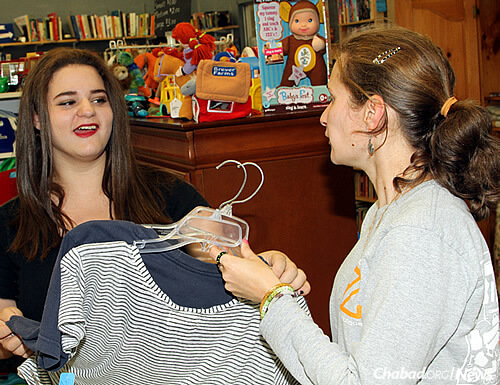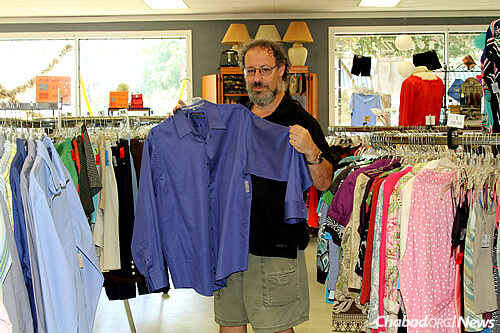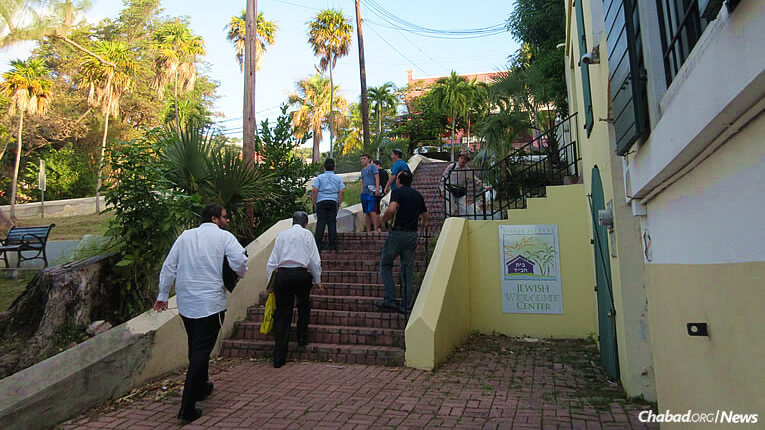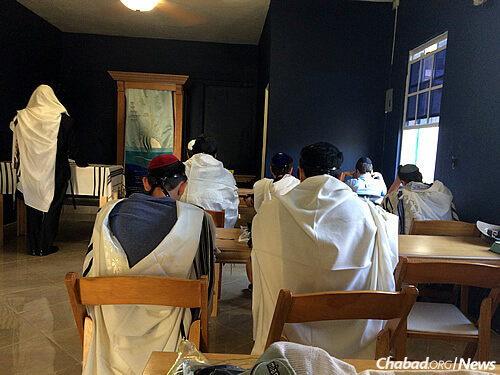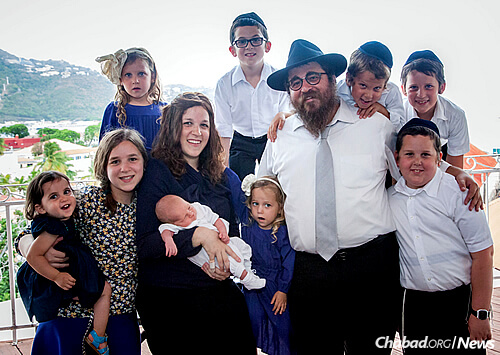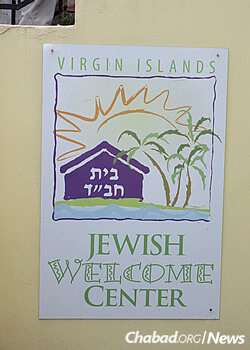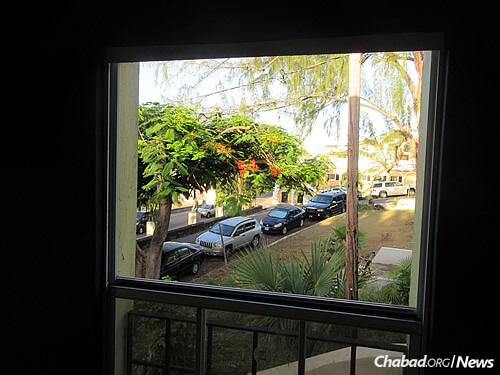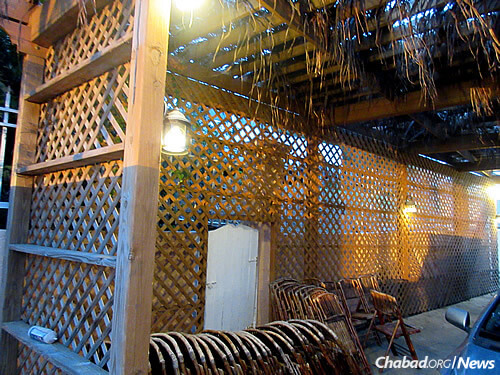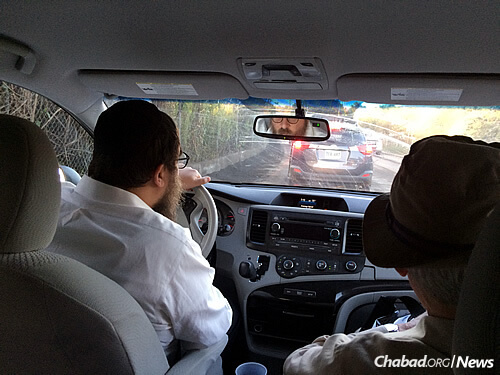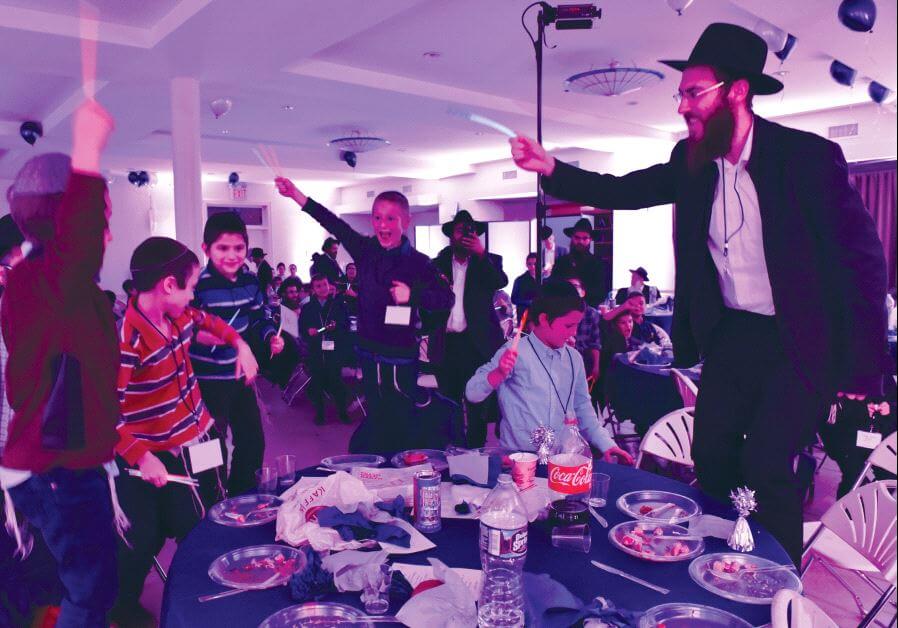Original Article in Chabad.org
“Hello, welcome to ZABS Place! My name is Aaron.”
Aaron Roochvarg sports an award-winning smile. He’s there at the door, enthusiastically greeting customers when they enter the store and asking if they need any assistance finding items.
“How did you hear about ZABS Place?” he asks.
“I’ve been here a few times,” reports the customer. “Thank you, Aaron, for all of your help!”
“You are very welcome!” comes the reply.
It’s just a few minutes after 10 a.m. (opening time) and a stream of people file into ZABS Place in the charming town of Matthews, a 20-minute drive from Charlotte, N.C. There is a buzz around town about the quality and selection of clothing, books, games, toys, home goods, handbags, greeting cards and more at this thrift boutique that opened nearly three years ago.
It’s obvious that the selection of merchandise is excellent. But it doesn’t take long for first-time shoppers to realize just how special ZABS Place is. Colorful signs around the store inform customers that “ZABS Place is a thrift boutique employing young adults with special talents.” (The word “talents” appears over the crossed-off word “needs.”) The store’s website advertises it as “Affordable. Upscale. Inclusive.” That it’s all about “providing opportunities, realizing potential and having fun.”

‘10 Years From Now . . . ’
In one part of the store, three teenagers sip frozen drinks and banter about whether or not an outfit “looks cute.” In another, mothers with kids in tow throw a few outfits over their arms, heading for the dressing room. All the while, half-a-dozen young adults with special needs are doing their jobs in every area of running a business. Roochvarg, 27, continues to greet and assist customers. Erin Keeter, 28, is organizing children’s games. And Jonathan Gale, a 22-year-old employee who has been with the store from the start and now works 10 hours a week, is shelving books.
He picks up a holiday cookbook and perceptively asks his supervisor, “Should this book be here? It is not near holiday time!” She suggests he move it to another section.
In the back corner of ZABS Place, Cammie Wilson, 25, is straightening books and games on a high shelf as employment coordinator Alison Dugo, 30, looks on. “If you can’t reach this, what you should do?” asks Dugo. Wilson carefully considers the question and suggests bringing a ladder next time.
Dugo has been working at ZABS place for two years. In addition to teaching job skills, she spends a great deal of time on soft skills—the not-so-obvious, real-life know-how needed to be successful and professional at work. These include dressing appropriately, having a positive attitude, knowing how to act in the break room, and learning how to get along with fellow workers and bosses. Dugo thinks quite a bit about the employees’ futures. “I ask them: What do you imagine doing 10 years from now? What are you good at? What do you want to be good at; what is challenging for you?”
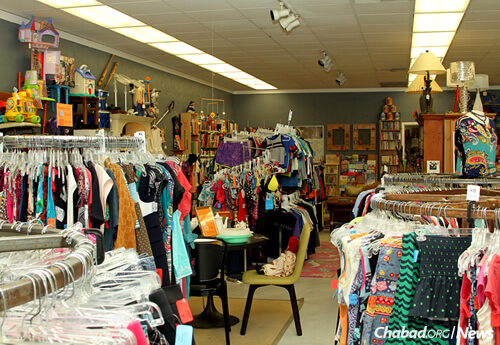
In many ways, ZABS Place is intentionally designed to be a training ground and stepping stone to future employment elsewhere in the community.
While Dugo is working with Wilson, Rochel Groner—co-director of ZABS Place and Friendship Circle of Charlotte, with her husband, Rabbi Bentzion Groner—is up front with Keeter, patiently going over how to use the store’s scheduling program on the iPad to request time off. The young woman and her family are planning a trip to Canada in a few weeks, and she is learning the various drag-down menu options, which include vacation days, sick leave and time needed for a personal or family emergency.
Keeter works in the store Mondays and Thursdays sorting children’s clothing and organizing the toy section. She is also one of the artists and craftspeople with special needs who have signed a consignment agreement with ZABS Place to sell their creative works. She photographs flowers near her home and makes them into greeting cards. “I sold three last week!” she reports.
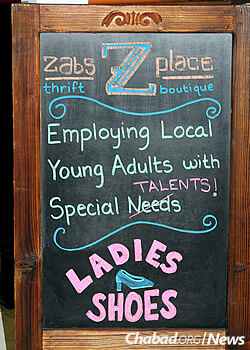
Hannah Strunck, 18, is also a consignor, making bath crystals, balms and creams at home to be displayed and sold at ZABS Place alongside jewelry, journals and non-noise-producing fidget toys. Hannah’s older brother, Andy, 27, works at the store two days a week for 90 minutes each day, cleaning floors, hanging clothes, and dusting shelves. He comes with his longtime-care staff member, Aaron, who serves as a job coach.
“Andy feels proud, he feels welcomed, and he can sustain work without complaining,” according to his parents, Michael Strunck and Ruth Singer-Strunck. “For him, this is a huge accomplishment.”
‘A Really Important Place’
For the Strunck family, ZABS Place is more than a vocational training program for their children; it is a source of Jewish pride and identity. While the main indicators that the store has a Jewish affiliation are the mezuzahs on all doors and a sign indicating that it is closed on Shabbat (it’s open on Sundays from noon to 6 p.m.), ZABS Place has become a second “Jewish home” for the Struncks.
“It is a really important place. Much here in North Carolina is Christian-based,” observes Ruth Singer-Strunck, who grew up in New Jersey and moved to Charlotte from South Florida several years ago. “You often hear about a church doing this or a pastor doing that [for a good cause]. It made me feel especially good to have my kids involved in something Jewish. This is a connection to my community. I feel more plugged in and want my kids to have a connection to the Jewish faith.”
They’ve joined the Groners for Passover seder, and their children have participated in Friendship Circle.

Cheryl Slane and her family, former members of the Charlotte Jewish community now living in New Orleans, agree wholeheartedly with the sentiments expressed by the Struncks.
“Chabad believes that every neshamah [soul] has a place,” she says. Long involved with Friendship Circle, she looks to ZABS Place as a model for training young adults with special needs, like their son, Ben, who’s almost 20. “Giving people with a disability a place to work is pretty amazing. That’s what we are trying to do here in New Orleans. There are so few job sites in the country for people with special needs.”
Numerous Charlotte families have gotten to know the Groners through their children’s participation in Friendship Circle, which in many ways was the birthplace for ZABS Place.
“When Jonathan was a junior in high school, we asked him what he wanted to do. He didn’t want to continue in high school; he wanted to work,” recall his parents, Caren and Charlie Gale. “We wanted a place that would understand him in his fullness—with all of his abilities and disabilities. We sat around the kitchen table and said, ‘What can we do to help Jonathan and all the families we have met in waiting rooms all these years?”
The former clarinetist and screenwriter couple, longtime transplants from Los Angeles, had an idea—open a business. The Gales approached the Groners, “concerned about people like Jonathan, who were getting older, and what to do when they age out of Friendship Circle.”
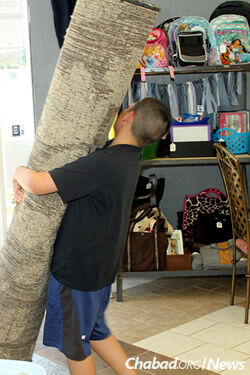
‘A High Bar for Our Children’
Rochel Groner adds some important details in the evolution and growth of ZABS Place.
“In 2012, some Friendship Circle families approached us and asked if we would start a Jewish group home,” she explains. The Groners were more focused on vocational training and the overall lives of young adults with special needs as they got older. “We wondered: ‘What are they doing meaningfully during the day?’ When I would ask parents what their child was good at, many didn’t know. We had to do something.”
Rochel went home and started brainstorming. She was generating ideas for businesses with low overhead and thought of a thrift store. She searched online for “thrift stores and disabilities,” and came across Our Thrift Store in Franklin, Tenn., which provides 25 ongoing jobs for young adults with special needs. “A few months later, when Friendship Circle was on break for the summer, we made the nine-hour drive to see the program.”
Dave Krikac, the store’s founder, was very helpful in providing guidance about the ins and outs of starting and running a thrift shop. When the Groners returned to Charlotte from Tennessee, they met with the Gales and discovered that they, too, had been thinking about starting a business for people with special needs.
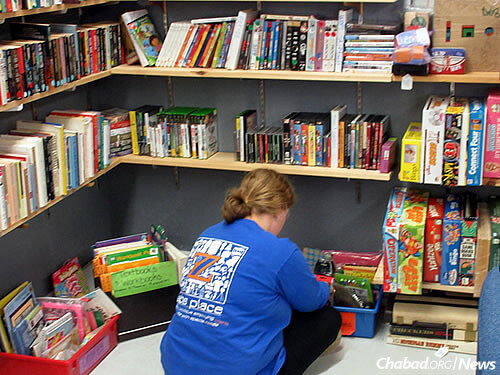
Rochel’s formal training is in Jewish education; she was a classroom teacher for 10 years. She also notes with a small smile, “I did help run a basement business with family members many years ago in Baltimore, selling Israeli skirts.” At the time, Groner learned many things, including web design, though she acknowledges that the business was “minimally successful.”
When she and Bentzion married in 2005, they moved to Charlotte. In 2007, she began working with Bentzion at Friendship Circle International, an organization that creates chapters in local communities to foster relationships and friendships between typically developing teens and children with special needs. Through her work with Friendship Circle, Rochel acquired a great deal of experience in working with people who had all kinds of abilities.
“We know from Friendship Circle that everyone is unique, and has hidden qualities and something to share,” states Bentzion. In imagining a workplace for people with special needs, the Groners strongly believed that employees with special needs would develop social skills through their jobs.
Truth be told, “there were a lot of ups and downs” on the road to starting a thrift store, attests Rochel. “We looked at 25 places in a year and a half,” adds Bentzion. “Even when it got tough, people like the Gales stood behind us,” helping with fundraising and much of the behind-the-scenes work.

Throughout the sometimes challenging startup process, the Groners stood fast to their sense of mission and their dedication to the people they serve. “It was a community effort—totally a partnership,” says the rabbi. Many helped gather, transport and store merchandise, as well as remove room dividers, strip and repaint walls, and more.
They credit Rochel with an eye for business and an easy demeanor. “Rochel is sweet, dedicated, hardworking and intelligent. When we met, I thought she was too young to work,” jokes Ruth Singer-Strunck, commenting on the 30-something’s young appearance.
Work she does, 24/6, her only day off being on Saturday, the Jewish Sabbath, when the store is closed.
“Rochel had a vision—a place that was bright and airy, where people will want to shop,” adds Caren Gale. “It has attracted a cross-section of people, from young thrifters to people struggling financially, and they buy because they feel like mensches here.”
Singer-Strunck also has kind words for the Groners: “They are lovely, good people doing good work. Rochel delivered on a concept. She knew what she wanted it to look like.”
Caren Gale agrees. “I admire her attention to detail, and her desire to run a store that is both professional and beautiful.”
But perhaps most importantly, she says, “Rochel sets a high bar for our children—everything parents of a child with special needs could hope for.” Her husband, Charlie, adds that “she has such an affinity to this population and believes strongly in what they can do.”
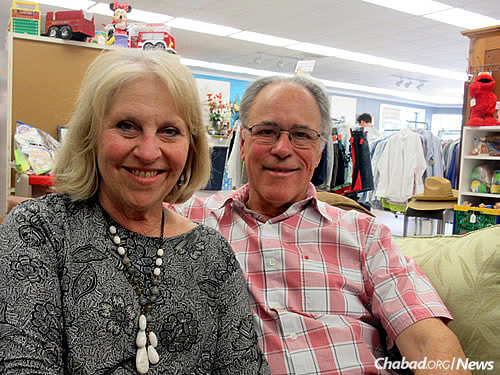
A Wonderfully Nurturing Place’
Another fan of the Chabad emissaries is Lisa Shporer, a community member with more than 10 years of retail experience. Shporer volunteers 20 to 30 hours a week, and sees herself as the “snow-globe shaker” since she is known for “shaking things up” at ZABS Place.
Her connection to the Groners and ZABS Place is uniquely personal. Her son, Zachary, died of leukemia in 2012, at the age of 19. He was a student at the American Hebrew Academy in Greensboro, N.C., and an active volunteer with such organizations as the Special Olympics, student council and Friendship Circle.
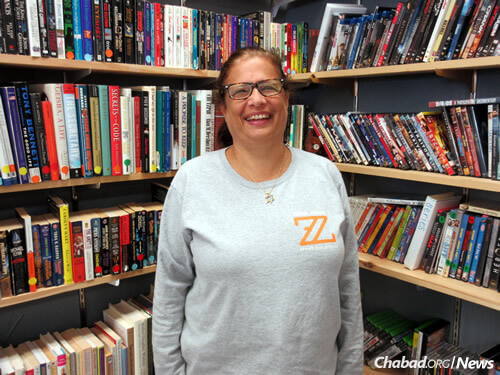
The Groners, who had a special relationship with Zachary, approached the family at shivaabout “doing something in his merit.” They decided to name the soon-to-be opened ZABS Place in his memory, using the initials of his Hebrew name: Zechariah Avraham Baruch. A sign and picture near the checkout station explains the origin of the store’s name.
Elias Roochvarg, the longtime cantor at Temple Israel of Charlotte and the father of Aaron is pleased with ZABS Place and his son’s work there. “It is a wonderfully nurturing place for adults with special talents,” he says, adding that his son looks forward to two afternoons a week there. “As parents of an employee and as members of the community, we sheppedparental and communal nachas knowing how much our son is thriving as a result of the staff, and how great a service to the community Chabad is performing in this endeavor.”
Caren Gale is proud that Jonathan feels “confident and really productive,” creating the book section at ZABS Place. “Our hope is to be a model for other communities and to expand; it is always a process where we refine and add. We all need to find our own path. Why shouldn’t these kids?”
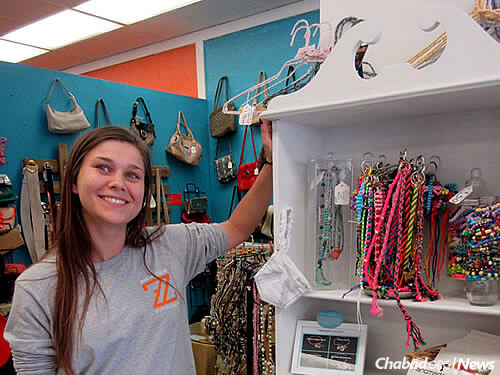
Merchandise With a Mission
Customers say they appreciate the variety and quality of merchandise at ZABS Place as well as the mission behind it. They learn an important lesson about people, in particular, the abilities of people with special needs.
“It’s nice to see their impressions evolve,” says Rochel. “For many, it is their first opportunity to come this close to people with special needs. ZABS Place helps them build educated opinions—that all people are important and can do things. We even see their patience when one of our employees is at the cash register.”
Caren Gale acknowledges that she hadn’t “anticipated at the start the role ZABS Place would have in educating the community. A byproduct of the program is that people came in, and their minds were changed. People were moved.”
Rochel says she never imagined directing a thrift shop. “But of all the jobs I’ve had, I am most excited to come here. I just love the people!”
She adds: “People ask me if I still teach. And I do. I teach here, every day.”

In fact, the general population got an opportunity to witness Rochel’s abilities firsthand. Several weeks ago, Rochel and Bentzion were on a flight back to the United States, via Belgium, after chaperoning a Birthright Israel trip. About an hour into the flight, a young boy with autism began screaming and crying. Passengers began getting upset, and the mother seemed unsure of what to do. Rochel approached the boy with her hand out, which he grasped; the two then spent a few hours playing near a bulkhead on the plane. A photo posted by Bentzion on Facebook went viral, generating more than 6,500 Likes.
That didn’t surprise members of the Charlotte community and those affiliated with ZABS Place. Singer-Strunck made it a point to say “that is who she is. She saw that a kid was in trouble; it didn’t matter who. This is their world. They are immersed in the work they do.”
Alison Dugo knows that all the attention on Rochel must have been tough. “She is humble and shy. For her, it is a calling—what she thinks she should be doing.”
“I didn’t like it,” admits Groner. “But I will survive the attention,” she says, as long as it’s been an opportunity for others to learn. “I hope what comes out of this is the ability for people to realize that they can reach out and offer support to one another, instead of staring or being apathetic. We’re all different, and the onus is on the community to make it work for everyone.”
It’s what her mother always taught, says the Chabad emissary: “Leave the world a better place than how you found it.”
